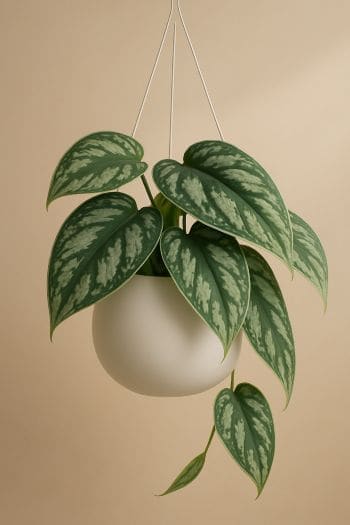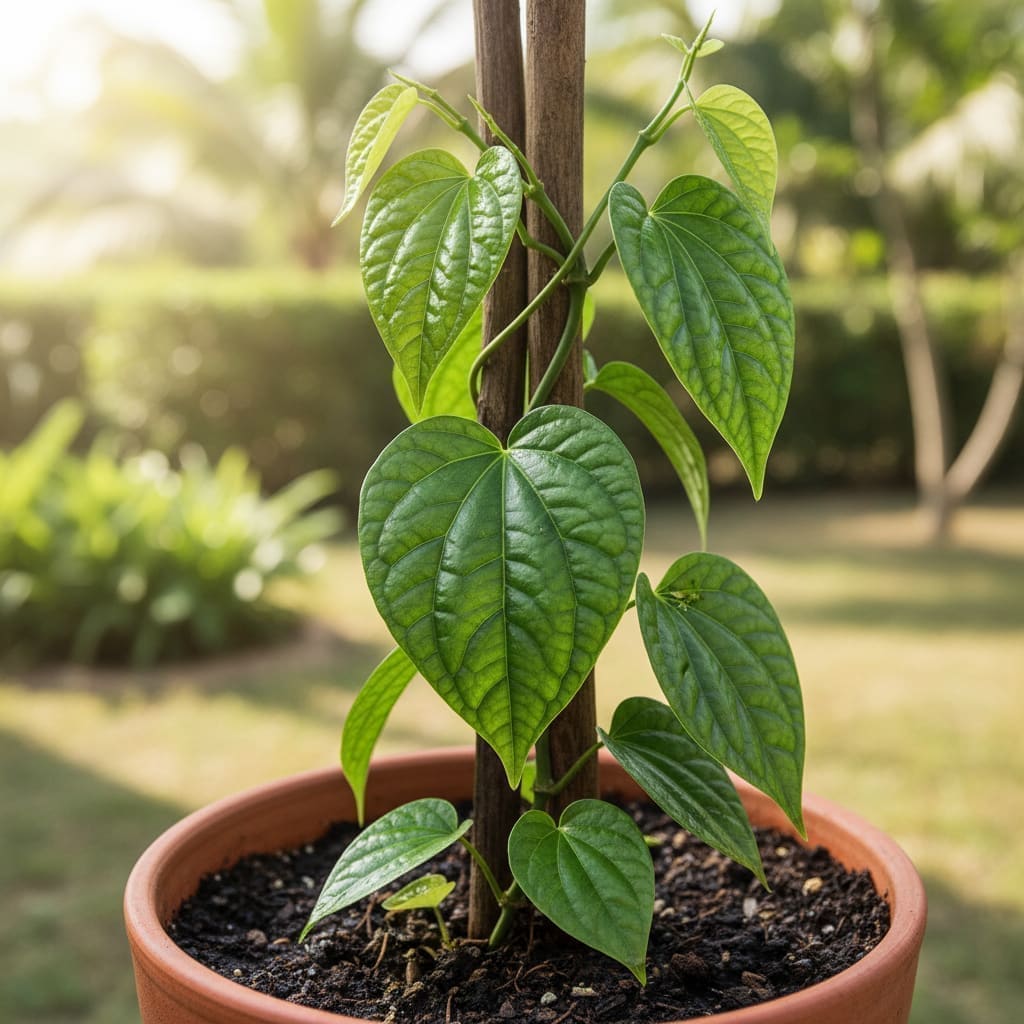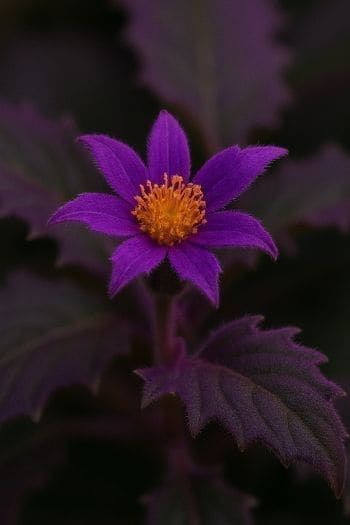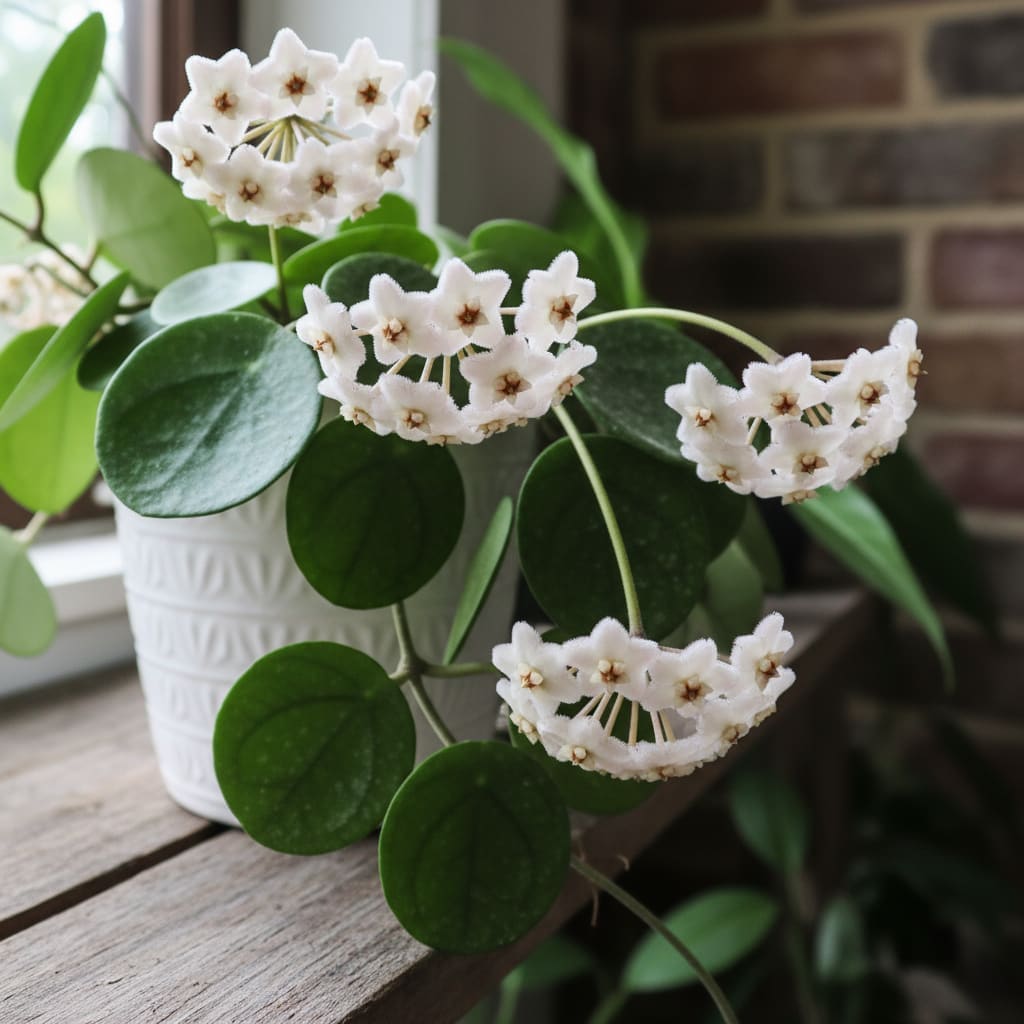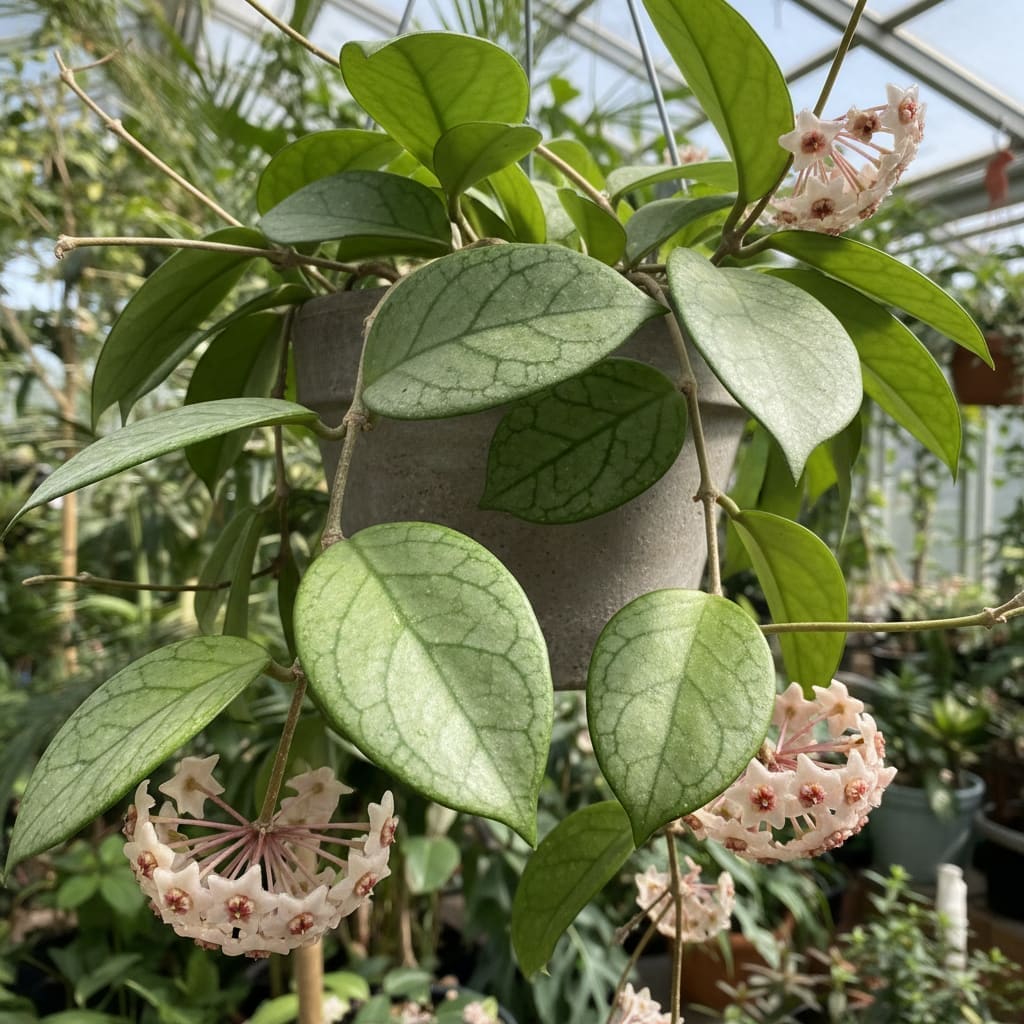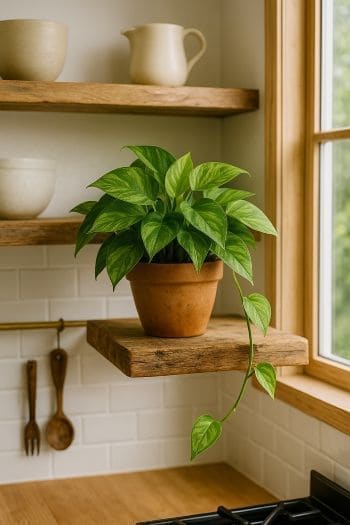Scindapsus pictus ‘Exotica’ Care Guide
Overview
Scindapsus pictus ‘Exotica’ is a striking tropical vine native to the rainforests of Southeast Asia. Known for its large, heart-shaped leaves splashed with shimmering silver variegation, this plant is a favorite among indoor gardeners for its decorative appeal and relatively easy care. It is often confused with Philodendron varieties due to its vining habit, but it belongs to a distinct genus with its own unique characteristics. In the right conditions, ‘Exotica’ can trail elegantly from shelves or climb a support, making it a versatile choice for many interior spaces.
Identification & Growth Habit
‘Exotica’ is a cultivar of Scindapsus pictus distinguished by its larger leaves and more pronounced silver markings compared to other varieties. The foliage is typically 4–6 inches long, with a velvety texture and a deep green base color. Silver splashes and margins give the leaves a reflective quality under light.
This plant exhibits a trailing or climbing growth habit. In the wild, it uses aerial roots to cling to tree trunks, reaching for higher light levels. Indoors, it can be grown in hanging baskets for a cascading effect or trained up a moss pole, trellis, or other vertical support to encourage larger leaf size.
Light & Placement
Scindapsus pictus ‘Exotica’ thrives in bright, indirect light. Place it near an east- or north-facing window, or a few feet back from a south- or west-facing window filtered by sheer curtains. While it can tolerate medium to low light, growth will slow and variegation may become less pronounced. Avoid direct sunlight, which can scorch the delicate leaves.
Rotate the plant every few weeks to promote even growth and prevent it from leaning toward the light source.
Watering & Humidity
Water when the top 2–3 inches of soil feel dry to the touch. In summer, this often means watering about once a week; in winter, reduce frequency as the plant’s growth slows. Avoid allowing the soil to dry out completely or remain soggy, as both conditions can stress the plant and lead to root rot.
‘Exotica’ prefers moderate to high humidity but adapts to most household environments. If the air is particularly dry—especially in winter—consider using a humidifier, placing the plant on a pebble tray with water, or misting occasionally.
Soil & Repotting
Use a well-draining potting mix with a peat-based base, amended with perlite or coarse sand for aeration. A mix designed for aroids or tropical houseplants works well. Always choose a pot with drainage holes to prevent waterlogging.
Repot every 1–2 years or when roots begin to circle the pot. Spring is the best time to repot, as the plant is entering its active growth phase.
Fertilizing
Feed monthly during spring and summer with a balanced liquid fertilizer diluted to half strength. This supports healthy foliage growth and maintains vibrant variegation. Suspend feeding in fall and winter when growth naturally slows.
Pruning & Training
Prune to control length, encourage bushier growth, and remove any yellowing or damaged leaves. Use clean, sharp scissors or pruning shears to cut just above a node. Regular trimming can stimulate branching and fuller foliage.
For climbing growth, provide a moss pole, trellis, or other vertical support. Secure stems gently with plant ties or soft twine. Climbing often results in larger leaves and more vigorous growth compared to trailing.
Propagation
Step-by-Step Stem Cutting Method
- Select a healthy vine and cut a section just below a node (where a leaf meets the stem). Ensure the cutting has at least one leaf and one node.
- Remove the leaf closest to the cut end to expose the node for rooting.
- Place the cutting in a jar of clean water, ensuring the node is submerged but leaves remain above water. Alternatively, plant directly into moist, well-draining soil.
- Keep in bright, indirect light and maintain consistent moisture (if in soil) or change the water every few days (if in water).
- Roots typically develop within 2–4 weeks. Once roots are 2–3 inches long, transplant water-propagated cuttings into soil.
Common Problems
Pests
- Spider mites: Look for fine webbing and stippled leaves. Increase humidity and wipe leaves with a damp cloth; treat with insecticidal soap if needed.
- Mealybugs: Cottony clusters on stems and leaf nodes. Remove manually with a cotton swab dipped in alcohol or apply a horticultural oil spray.
- Scale insects: Brown, shell-like bumps on stems. Scrape off gently and treat with neem oil or insecticidal soap.
Diseases
- Root rot: Caused by overwatering or poor drainage. Remove affected roots, repot in fresh, well-draining soil, and adjust watering habits.
- Leaf spot: Brown or black spots may indicate fungal or bacterial issues. Remove affected leaves, improve air circulation, and avoid wetting foliage.
Toxicity & Pet Safety
Scindapsus pictus ‘Exotica’ is toxic to cats, dogs, and humans if ingested, due to insoluble calcium oxalates. Keep out of reach of pets and children, and wear gloves if you have sensitive skin when handling cuttings or sap.
Styling & Decor Tips
- Hang in a basket to showcase trailing vines in living rooms or offices.
- Train up a moss pole for a bold vertical accent and larger leaves.
- Pair with contrasting foliage plants—such as solid green or burgundy leaves—for visual interest.
- Use decorative pots that complement the silver variegation, such as matte black or white ceramic.
Varieties & Cultivars
Within the Scindapsus pictus species, notable cultivars include:
- ‘Argyraeus’: Smaller leaves with more speckled silver variegation.
- ‘Silvery Ann’: Irregular silver patches, often covering larger portions of the leaf.
- ‘Exotica’: Larger leaves with bold silver splashes and margins.
Buying Tips & Maturity
When purchasing, look for plants with firm, unblemished leaves and no signs of pests. Check the undersides of leaves and along stems for any webbing or residue. A healthy root system should be visible through drainage holes without being rootbound.
Young plants may have smaller leaves; with time and support for climbing, mature specimens can produce significantly larger foliage and denser growth.
Seasonal Care
- Spring/Summer: Active growth period. Increase watering frequency, fertilize monthly, and consider repotting or pruning.
- Fall/Winter: Growth slows. Reduce watering, stop fertilizing, and maintain stable indoor temperatures away from drafts.
FAQ
- How fast does Scindapsus pictus ‘Exotica’ grow?
Growth rate is moderate; in ideal conditions, expect several inches of new vine each season. - Can it live in low light?
Yes, it can tolerate low light, but variegation may fade and growth will slow. - Why are my leaves curling?
Leaf curl can indicate underwatering, low humidity, or sudden temperature changes. Check soil moisture and environmental conditions. - Should I mist my plant?
Misting can temporarily raise humidity, but for lasting effects, use a humidifier or pebble tray. - Is it the same as a pothos?
No. While sometimes called “satin pothos,” it is a different genus from true pothos (Epipremnum).
